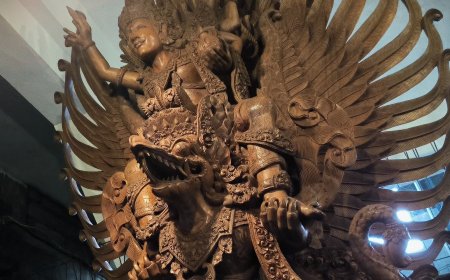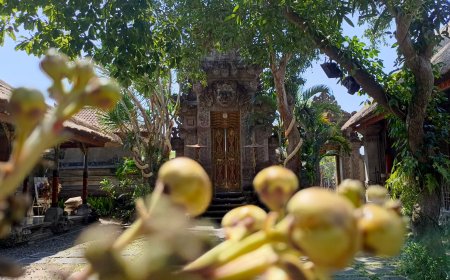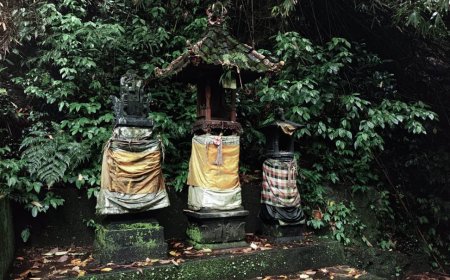Paibon Ki Mantri Tutuan, Ancestral Temple of the Large Family of Gunaksa Village
Worship of ancestors, or Tarmalupeng Pitra Puja, is a crucial aspect of the Ramayana religious tradition. In Gunaksa Village, the extended family established the Paibon Ki Mantri Tutuan in 2009 as a central place for ancestor worship and gatherings of family members from various regions. The Paibon was constructed based on the Tri Mandala concept, featuring various shrines representing spiritual values and the balance between the material and spiritual worlds. Every year, the extended family conducts a piodalan ceremony on Purnama Kapat as an expression of respect for the ancestors and to maintain spiritual balance in Balinese culture. This ritual not only strengthens family bonds but also preserves the cultural heritage values from one generation to the next.
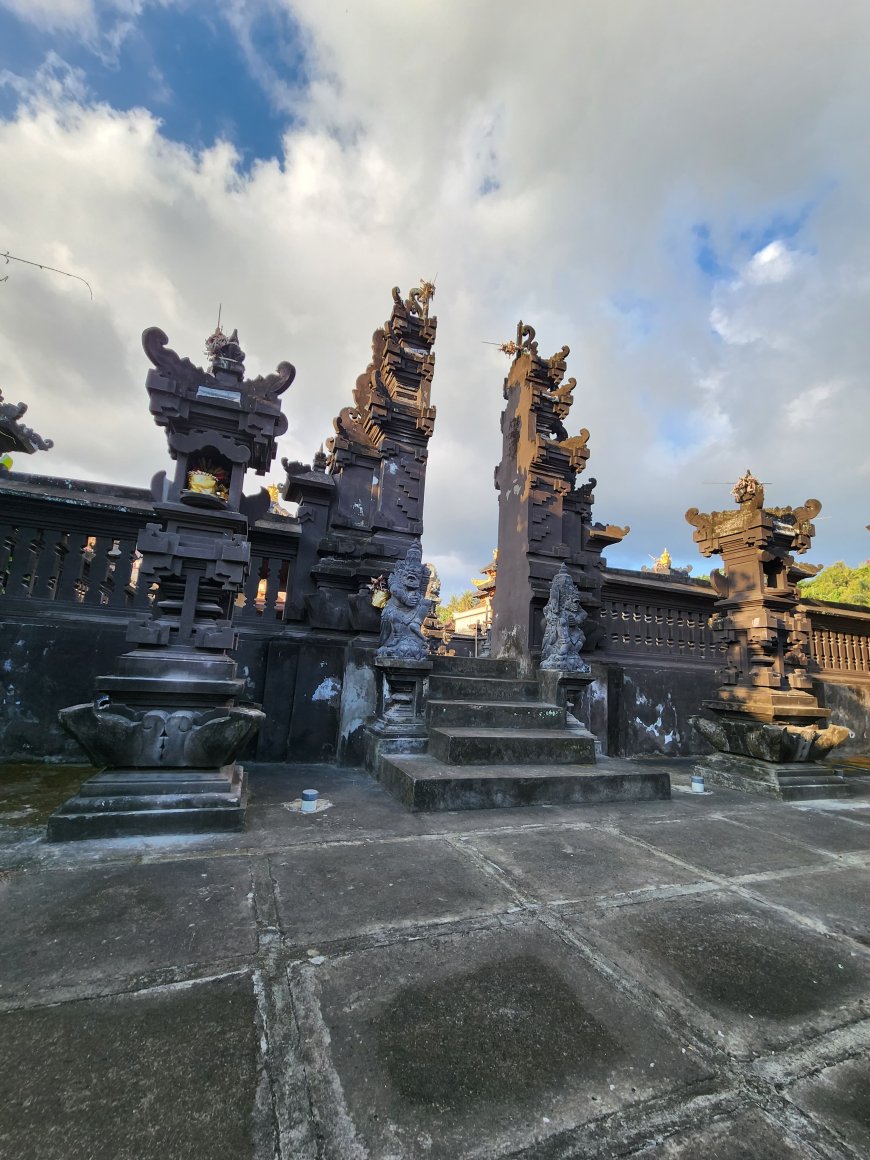
Worship of ancestors, known as Tarmalupeng Pitra Puja, is a crucial aspect of the Ramayana religious tradition. In sacred texts such as Iti Prakerti, Siwa Gama, Putusan Bhagawan Manohari, and Jajar Kemiri, the stages to be followed in honoring ancestors are detailed. The essence of these palm-leaf manuscripts is the obligation for every household head (KK) to construct a Perihyangan called Sangar Kabuyutan within the compound. This Perihyangan is a sacred place that emits Kemulan Taksu, a vital spiritual energy. According to the Siwa Gama manuscript, if there are 10 or more families in one compound originating from various household heads, they must form a kinship bond based on a common lineage. This is known as Sanggah Gede or Merajan Agung, often referred to as Merajan Pertiwi. As the household head multiplies, and families are dispersed across various locations, Sanggah Gede or Merajan Agung must be established more than once. This is what is referred to as wenang ngwangun Paibon. In other words, Paibon is an expansion of Sanggah Gede to accommodate the growth of a larger and scattered family. It is essential to understand that this is not just a ritual regulation but also reflects a commitment to maintaining moral and spiritual integrity in daily life. King Dasarata in the Ramayana is a good example of following the principles of Tarmalupeng Pitra Puja, demonstrating deep respect for ancestors and strong moral values.
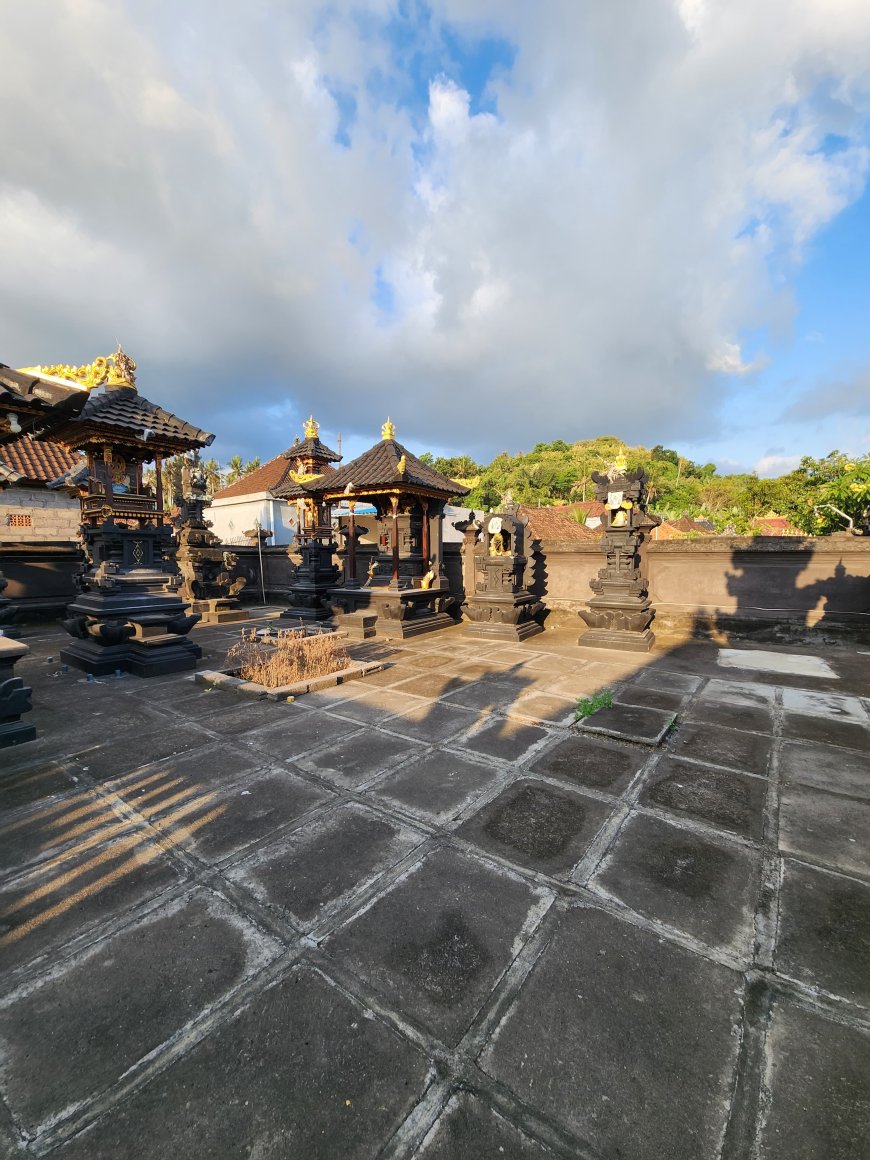
In Gunaksa Village, a large family established a Paibon Ki Mantri Tutuan. In an effort to preserve and celebrate their connections with relatives in various regions, one family head decided to establish Paibon Ki Mantri Tutuan in 2009 based on insight or requests from ancestors through the holy person Pedanda. This family has strong ties to various relatives in different regions, reflecting their significant role in maintaining religious and kinship traditions. One prominent family in Gunaksa Village has deep roots spanning various regions in Indonesia, such as Java, Sulawesi, and Sumatra.
Paibon Ki Mantri Tutuan serves as a center for ancestor worship and reverence, as well as a gathering place for family members from different regions who share a common ancestry. The Paibon is located in Banjar Patus, Gunaksa Village. The Paibon is not separate from the Tri Mandala concept. Tri Mandala comes from the words "tri" and "mandala," where "tri" means three, and "mandala" means a place. Thus, Tri Mandala means three places for activities during ceremonies in a temple. In Paibon Ki Mantri Tutuan, the Nista Mandala or the outer part of the paibon serves as a place to prepare Yadnya, while the Madya Mandala, the middle part, houses the gong pavilion, kulkul pavilion, and Apit Surang, which functions as a protector and barrier against negative energy. It also cleanses impure thoughts before entering the sacred area of the Utama Mandala. The Utama Mandala is the most important place for worshiping Ista Dewata, the manifestation of Sang Hyang Widhi Wasa/God Almighty, and houses various shrines with their respective functions. Bale Piasan, as a space for decorating and arranging sacred symbols such as the daksina shrine and statues, is crucial in the piodalan ceremony as an expression of devotion to ancestors. Pelinggih Penglurah, with its tiered structure and location on the left side of the paibon, reminds of the element of Bayu/Wind as the mover of life according to the concept of Panca Maha Bhuta. Sapta Patala, as the shrine of Ida Sang Hyang Antaboga, becomes the focal point for worshiping the world and symbolizes connection with the spiritual dimension. Pelinggih Bhatara Hyang Ibu serves as a place for ancestors who have become Hyang Dewa after being sanctified in the Karya Gede Ngenteg Linggih ceremony. Pelinggih Gedong Tumpang Dua, as the shrine or stana of Bhatara Kawitan Tutuan, symbolizes the close relationship with ancestors. Pelinggih Sanggaran, as the central shrine, becomes the main place for worshiping Ida Sang Hyang Widhi, representing the macrocosmos and the universe. Gedong Sari and Limascari Catu, each serving as places for worshiping Sang Hyang Sri Sedana and Ida betara tohlangkir or Mount Agung, add rich spiritual dimensions. Gedong Sakaluan functions as a place for homage to Mpu Kuturan. At its peak, Sapta Tenggeng radiates a sacred aura as the Taksu of Paibon Ki Mantri Tutuan. The final shrine, bale pengaruman, plays a crucial role in the ceremony or piodalan, serving as the place for ngeligihan arca (the symbol of Sang Hyang Widhi) to seek the safety of the universe and its contents. In Bali's culture, rich in spirituality and diversity, these shrines play a crucial role in maintaining the balance between the material and spiritual worlds. The shrines reflect strong beliefs and values, serving as the foundation for daily life and maintaining a close relationship with the spiritual entities that guide them throughout life.
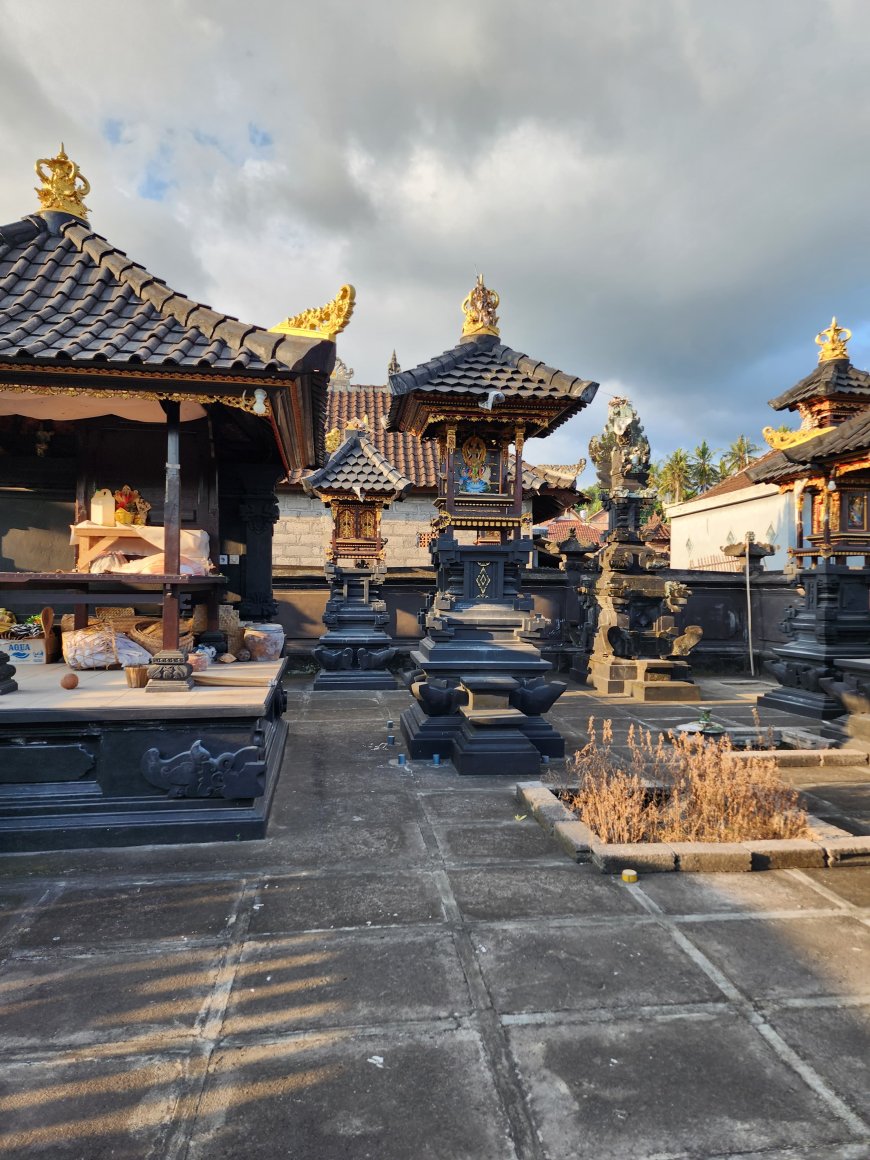
After performing the Ngenteg Linggih ceremony in November 2022, precisely during Purnama Kapat, Paibon Ki Mantri Tutuan carried out the piodalan ceremony to worship ancestors every year on the upcoming Purnama Kapat. Each year, the extended family in Gunaksa Village observes a special and sacred ritual. This piodalan ceremony is a significant moment determined by the yadnya ceremony, the culmination of a series of religious activities. Purnama Kapat, falling on a specific date each year, holds great reverence for them. This ritual is an expression of respect and gratitude to the ancestors, who play a crucial role in protecting and guiding the large family throughout their life journey.
Piodalan is not just a manifestation of reverence for ancestors but also a means to maintain spiritual balance in Balinese culture. It is a time when the family gathers at Paibon Ki Mantri Tutuan to make offerings to the gods, ancestral spirits, and absorb positive energy. Moreover, this ceremony serves as a vessel to preserve and celebrate cultural traditions and heritage. While conducting the piodalan ceremony, the large Tutuan family in Gunaksa feels that they genuinely adhere to the principles of Tarmalupeng Pitra Puja, maintaining moral and spiritual integrity in their daily lives. In this way, they not only strengthen kinship bonds among families scattered across different locations but also preserve values passed down from generation to generation. The piodalan ceremony during Purnama Kapat is a moment rich in meaning and spirituality as they navigate through life.





































